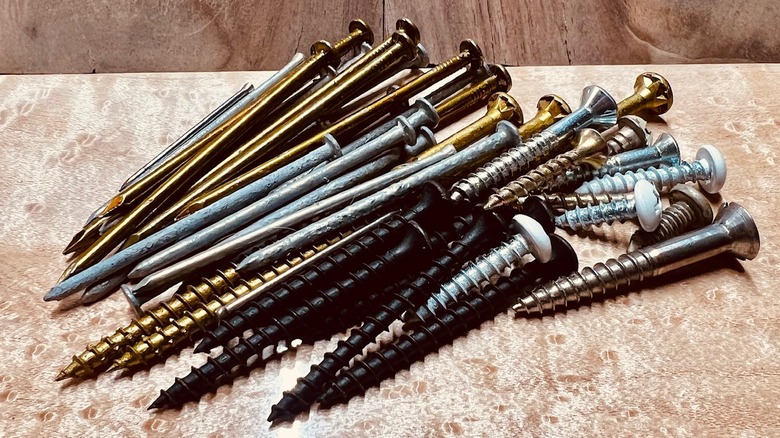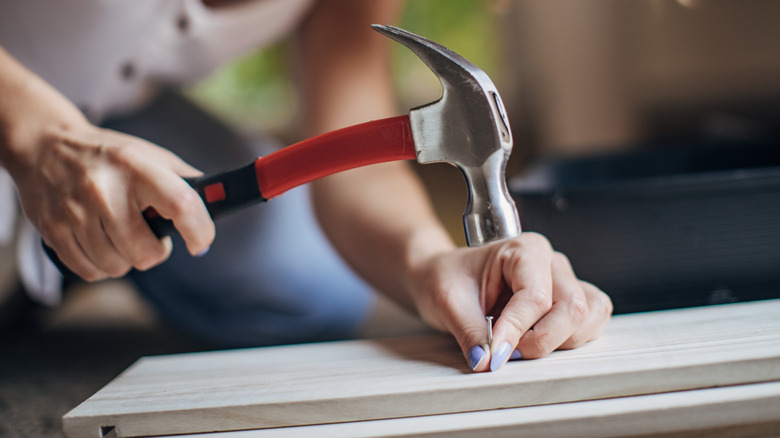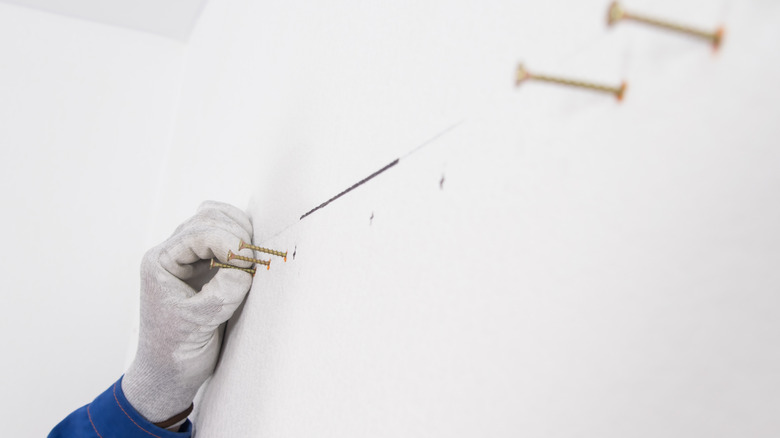Screws Vs. Nails: How To Know Which Is Right For Your Project
As a professional woodworker, I use screws and nails every day ... and truthfully, I hardly give them a second thought. When you think about it on a deeper level, though, nails and screws literally hold the world together. How they do it — and which one is right for which job — is an important bit of knowledge from which we can all benefit.
The humble nail has been around since before biblical times, playing a critical role in the development of human society. In the Bronze Age, nails were made from, well, bronze. In the Iron Age, well ... you get it. Way back when, families would often manufacture their own nails using home setups, and rumor has it that by the end of the 1700s even Thomas Jefferson participated in the task. Nails, because of their function, have always been valuable and important. The thread that defines a screw as a screw, meanwhile, is slightly younger, dating back to at least 400 BCE, though it has evolved a lot more than nails have over the centuries. The archetypical metal screw has a long, tapered section (the shank) with a helical raised segment of the screw created by removing material from the shank (threads). As such, you can see why screws, as a more complicated fastener, required large scale manufacturing to become as affordable and available as they are today.
Perhaps I should be giving these fasteners a second — and even maybe a third — thought! With that said, there's a reason both of these age-old things have survived into the present day, and let's look deeper at which projects are better served by one or the other.
Choose nails when you need shear force
To better understand when to use either a screw or a nail, you need to understand two things you might remember from your physics class: shear force and tensile strength. Nails are especially good at resisting shear force. The flat faces of two boards moving laterally in opposite direction create shear force. Now, when I say tensile strength — and listen, physics teachers, please hold your nose for this professional woodworker's description! — I'm using that term to describe how we measure the amount of stress or force that it takes to break two things apart. That is the primary value in choosing to use screws: Keeping things fastened together. Which is not to say that nails don't provide some tensile strength or screw don't fight shear. Just that each is better at one task than the other.
Nails with wide heads are generally used for tasks like construction, joining dimensional lumber when framing a house, securing a flat panel to a substrate, and building outdoor furniture. If you are going to use nails outside, get some with a zinc or other sort of coating that inhibits rust. As you use nails for more refined tasks, we often don't want the nail head to show as much, so that's when you go for finishing nails, which have heads that are only slightly larger than the nail's diameter. These are used to secure decorative molding to walls or furniture, and face frames to kitchen cabinets.
Nails are also the correct go-to nail for hanging pictures. To be clear, there are many different types of nails, with different goals, but all of them perform the same basic function — fighting shear.
Go for screws if your goal is tensile strength
Metal screws, in my professional opinion, are better than sliced bread. That is, I can slice my own bread, but I sure can't make a metal screw. The types of differing screws are numerous. Variation in shaft diameter and lengths, threads and their "twist" are hugely varied. There are brass screws, steel screws, some that are zinc coated, some painted black, stainless-steel screws ... all offering scores of differing heads for different uses. Even so, these variations are created to meet certain demands. For example, you use a certain type of screw with oak, and another type of screw with metal. Counter sunk heads (with a taper on the bottom face) snug into counter sunk holes to keep the heads level to the surface. Panhead screws provide a robust head to help squeeze two pieces together. There's a lot to unpack.
Let's get to the main point, though: Screws are used to pull two things together, providing tensile strength. Screwing a leg to a table apron, a shelf onto a wall, attaching a light fixture to a wall or ceiling — that's where screws are the right choice instead of nails. The ability to join two items together strongly is used in all sorts of manufacturing, construction, and DIY tasks. And the use of screws has gotten easier with the popularity of drills, as long as you use a screw that has a head that works well with a power-driver. The two best types for power drivers are the X-shaped Phillips head screws and the square-socketed Roberts screws, although other star-shaped screw heads are around.
So, to sum things up, if you want to make sure something does not slide over, use a nail. To bring them together, use screws.


